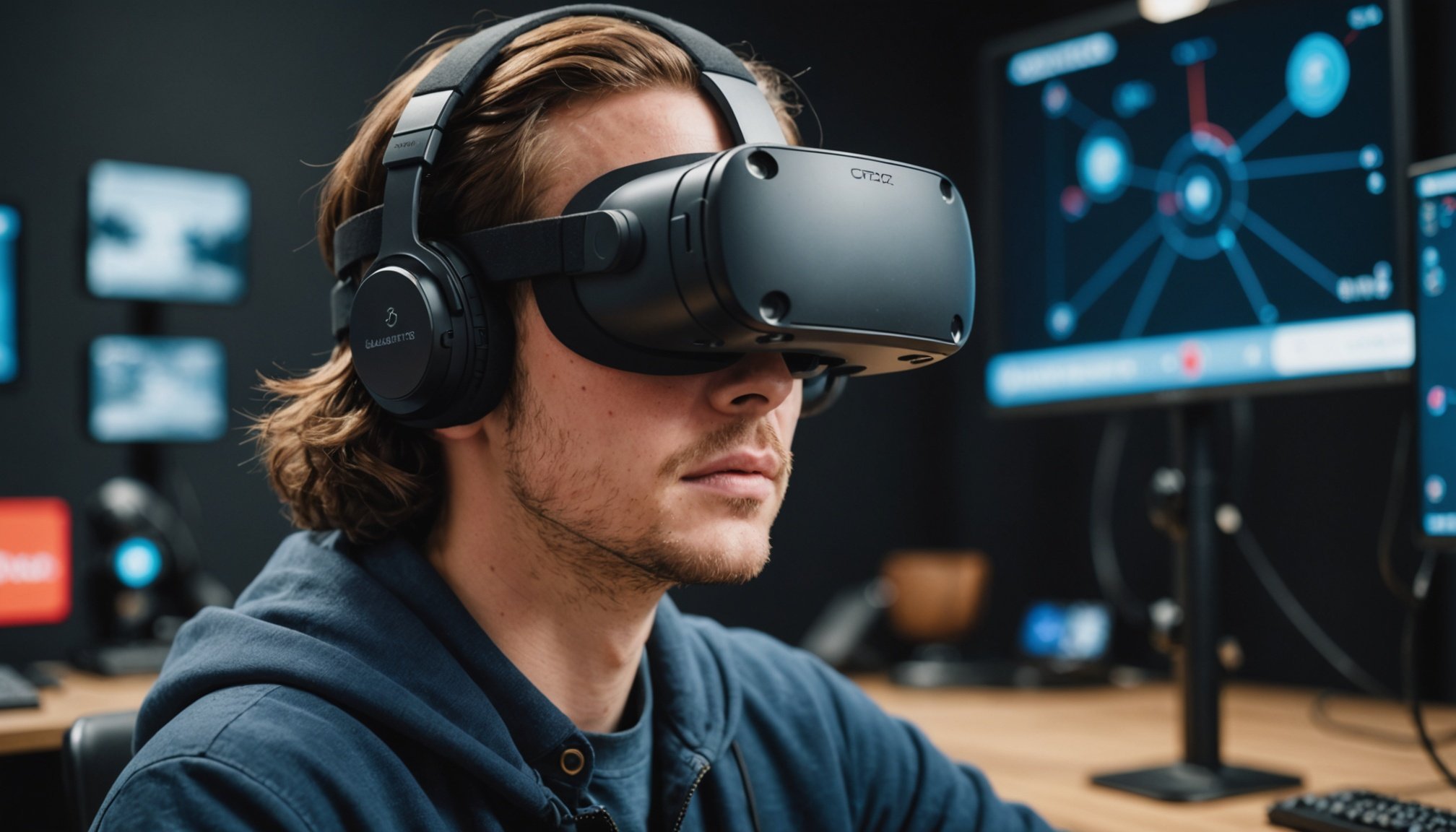Virtual Reality (VR) has transformed the landscape of gaming, offering immersive experiences previously unimaginable. However, as VR continues to evolve, so must its accessibility. In this article, we delve into how eye-tracking technology can enhance the accessibility of VR games, making them more inclusive and enjoyable for everyone. From understanding the basics to exploring practical applications, we’ll uncover the multifaceted role of eye trackers in the gaming world.
Understanding Eye-Tracking Technology in VR
At its core, eye-tracking technology involves the measurement of eye movements and gaze direction. This technology, often implemented through eye trackers, can detect where the user is looking, how their eyes move, and even the duration of their gaze. In a virtual environment, this data is invaluable, allowing for more intuitive interactions and immersive experiences.
Also to see : What are the key considerations for designing user-friendly HUDs in first-person shooters?
Eye-tracking technology utilizes infrared light to illuminate the eye and capture reflections using a camera. These reflections are then processed to determine the point of gaze. When integrated into VR headsets, this technology can track the user’s eye movements in real-time, providing seamless interaction within the virtual environment.
For game developers, this means creating VR games that respond intelligently to the user’s gaze, enhancing gameplay and making it accessible to individuals with various physical abilities. Morten Pedersen, a pioneer in the field, has been instrumental in advancing eye tracking for VR, highlighting its potential in game development.
Also to see : What are the key considerations for designing user-friendly HUDs in first-person shooters?
Enhancing User Experience and Accessibility with Eye-Tracking
One of the most promising applications of eye-tracking technology in VR is its potential to significantly improve the user experience. By understanding where users are looking, developers can create interfaces that are more intuitive and less dependent on physical controllers. This is particularly beneficial for users with limited mobility or dexterity.
Imagine navigating a VR menu simply by looking at options. This kind of gaze-based interaction can reduce the need for complex hand movements, making VR games more accessible. Additionally, eye-tracking allows for foveated rendering, a technique that renders only the part of the screen the user is focusing on in high resolution. This not only enhances visual quality but also reduces the computing power required, thus enabling smoother and more responsive gameplay.
Another significant benefit of eye-tracking is its ability to mitigate motion sickness, a common issue in VR gaming. By synchronizing the virtual environment with the user’s eye movements, developers can create more natural and less disorienting experiences. This is crucial for ensuring that VR games are enjoyable for longer periods and accessible to a wider audience.
Furthermore, eye tracking can provide valuable insights into user behavior. By analyzing tracking data, developers can understand how players interact with the game, which elements draw their attention, and where they encounter difficulties. This data-driven approach can guide the design of more accessible and engaging games.
Practical Applications of Eye-Tracking in VR Games
The integration of eye-tracking technology in VR games opens up a world of practical applications that can enhance accessibility and user experience. One of the most exciting applications is gaze tracking for control and navigation. By using their eyes to interact with objects and navigate menus, players can enjoy a more seamless and intuitive gaming experience.
In addition, eye-tracking technology can be used to create adaptive interfaces. These interfaces adjust in real-time based on where the player is looking, providing context-sensitive information and options. For example, if a player is struggling to find an item in a game, the interface could highlight or provide hints based on their eye movements.
Another noteworthy application is in augmented reality (AR). By combining eye tracking with AR, developers can create experiences that blend the real and virtual worlds seamlessly. This can be particularly beneficial for educational and training applications, where users need to interact with both physical and virtual objects.
Eye-tracking can also enhance social interactions in VR games. By tracking eye contact and gaze direction, developers can create more realistic and immersive social experiences. This is particularly important in multiplayer games, where non-verbal communication plays a crucial role.
Moreover, eye-tracking can be used for personalized content delivery. By analyzing where the player is looking, developers can tailor content to their interests and preferences. This creates a more engaging and personalized gaming experience, which can be particularly beneficial for educational and therapeutic applications.
Challenges and Future Directions in Eye-Tracking for VR
While eye-tracking technology holds immense potential for improving accessibility in VR games, it is not without its challenges. One of the primary challenges is the cost. Integrating eye trackers into VR headsets can be expensive, which may limit their adoption, particularly among smaller developers and independent creators.
Another challenge is ensuring the accuracy and reliability of eye-tracking data. Factors such as lighting conditions, eye color, and glasses can affect the performance of eye trackers. Developers need to create robust algorithms that can accommodate these variations and provide accurate tracking data.
Privacy is another critical concern. Eye-tracking collects sensitive information about the user’s gaze patterns and behaviors. Developers must ensure that this data is handled responsibly and that users have control over their information. This includes transparent data practices and robust security measures to protect tracking data.
Looking ahead, the future of eye-tracking technology in VR is promising. Advances in machine learning and AI are likely to improve the accuracy and reliability of eye trackers, making them more accessible and cost-effective. Additionally, as the technology becomes more mainstream, we can expect to see innovative applications that further enhance accessibility and user experience.
In conclusion, eye-tracking technology has the potential to revolutionize the accessibility of VR games, making them more inclusive and engaging for all users. By understanding and responding to eye movements, developers can create intuitive interfaces, reduce motion sickness, and provide personalized experiences that cater to a wide range of abilities and preferences.
While challenges remain, the future of eye-tracking in VR looks bright. Advances in technology and a growing awareness of the importance of accessibility will drive the development of more inclusive and immersive VR games. For those of you passionate about creating engaging and accessible experiences, embracing eye-tracking technology is a step toward a more inclusive future in the world of VR gaming. So, keep an eye on this exciting field – the possibilities are virtually endless.










